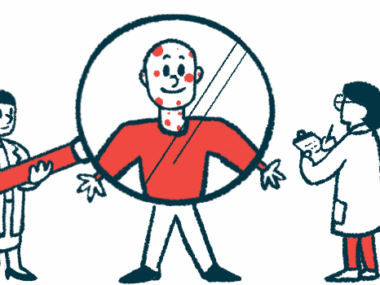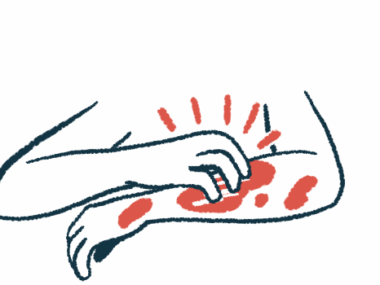Laser Therapy May Treat Symptoms in Dominant DEB: Case Report
Woman, 19, treated over 7 years resulted in fewer blisters, eased reddened skin
Written by |

Pulsed dye laser therapy — a treatment commonly used for skin conditions such as certain types of birthmarks and scars — resulted in fewer blisters and eased erythema (reddening of the skin) in a 19-year-old girl with dominant dystrophic epidermolysis bullosa (DEB), according to a recent case report.
The report, “Improved erythema and decreased blister formation in dominant dystrophic epidermolysis bullosa following treatment with pulsed dye laser,” was published in the journal Pediatric Dermatology.
DEB is one of the main types of epidermolysis bullosa (EB), a disorder characterized by fragile skin that easily blisters and tears. Mutations in the COL7A1 gene, which encodes for a part of type VII collagen, are the root cause of DEB. Type VII collagen is necessary for the adhesion of the different layers of the skin. Therefore, faulty collagen causes the skin layers to detach which results in blistering and the formation of scar tissue.
People with dominant DEB have a single copy of the pathogenic (disease-causing) mutation that was enough to cause the disorder. In most cases, patients inherit the harmful mutation from a parent. In other cases, dominant DEB occurs because of new mutations.
Current treatments are aimed at preventing blisters or minimizing the wounds. As yet, laser therapy has not been considered as a clinical treatment for dominant DEB.
“There is no established role for laser in the management of patients with [dominant DEB],” the scientists wrote.
Pulsed dye laser directs a concentrated beam of light at blood vessels in the skin. The heat from the light destroys targeted blood vessels without damaging the surrounding skin. This treatment can be effective for facial redness, port wine stains, hemangiomas (types of birthmarks), and scars.
In this study, researchers at University of Massachusetts Chan Medical School describe the case of a girl with dominant DEB who was successfully treated with pulsed dye laser.
The patient, an active figure skater, had been followed at the EB clinic for seven years. She had several family members with the disorder, including an aunt with a confirmed disease-causing mutation in the COL7A1 gene.
She had classical symptoms, such as atrophic (or shrinking) scarring with milia (small bumps) on the hands, feet, knees, and elbows. Pink discoloration and blistering on the knees, caused by trauma and which she found difficult to camouflage, were what bothered her most.
Pulsed dye laser therapy process
At the age of 15, the girl started receiving pulsed dye laser therapy on her knees, elbows, feet, and ankles at a low energy level. The goal was to treat purple-colored spots and reduce skin erythema. Before each session, she took oral ibuprofen and the skin was treated with local anesthetics.
She had 11 treatments on her knees and elbows. The treatment intervals ranged from eight weeks to eight months. No blistering, swelling, or pain has been reported after the procedure.
Her erythema has continued to ease, and the number and size of trauma-induced blisters decreased. No changes in the healing time of blisters were observed since they always tended to heal quickly.
At the time of study conclusion, the girl was still receiving laser therapy at regular intervals and was planning to start treating the back of her hands.
The researchers hypothesized pulsed dye laser therapy possibly decreases the formation of blisters in EB patients by stimulating collagen production after the blood vessel walls are destroyed.
“However, this was an unpaired study with no control limb, and the possibility of improvement over time, which is known to occur in some types of EB, including with [dominant dystrophic epidermolysis bullosa], cannot be excluded,” the team wrote.






